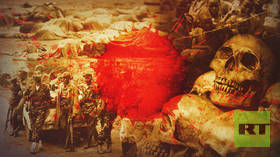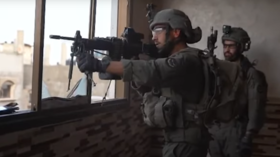Cape Town, South Africa- TEOTWAWKI
by Greg, Survival Blog:

It was a sunny Friday afternoon with a still wind when the end of the world as we know it happened. No, there was no nuclear explosion overhead, no EMP, no invasion from Russia, and no alien landing.
A Disaster in the Making
Mother nature provided the scene for this disaster. Cape Town South Africa is a place of beauty and home to one of the seven natural wonders of the world– the cape floral kingdom. It’s known as a peaceful holiday town and popular venue for film stars and the rich and famous alike. Who would have suspected that there was a disaster in the making?
A Unique Climate Zone
The Western Cape of South Africa is in a unique climatic zone. we receive winter rainfall similar to the Mediterranean countries. Rainfall is abundant in the winter, and lakes and dams are full by spring. Water supply is always plentiful, and summers are spent enjoying various water sports and barbecues over the weekend.
Disaster Strikes
During the winter of 2016, El Niño built in the southern oceans, rainfall was a little less than normal, and dam levels dropped to uncomfortable levels. Nobody paid attention to this, and the political situation in South Africa continued its steady decline into a banana republic. At that time, Cape Town, with its provincial government being the only honest well-run local government, was doing a good job of maintaining services, keeping business going, and stimulating job creation.
All the things Cape Town was doing were good in a normal working economy. Unfortunately, South Africa is not a normal economy. The rampant corruption, with the State capture and looting of the fiscus, had led to most provinces being bankrupt and services falling apart.
Hordes of People
Hordes of unemployed people streamed into the province from other areas settling in informal housing and creating shanty towns. These desperados were hoping that the striving local economy might offer them work and a way out of their poverty stricken existence. The local government tried to keep pace with the influx of humanity and demands on water and housing at unprecedented rates.
Water Restrictions for People Who Pay For It
By the winter of 2017, El Niño had built for the second year in a row, rainfall was again below normal, and dam levels dropped to critical levels. According to the constitution, basic services have to be supplied to the people, so government laid on more water supplies to the informal settlements where there was no metering or payment for the water. Taps ran 24/7 with nobody caring for the resource, as is typical if you don’t pay for it. Water had no value to them. Then, government instituted water restrictions to the people who actually paid for their water. Restrictions were 200 liters per person per day!
People Pulled Together
The people pulled together. They had the idea, we can do this. We’ll cut back on our leisurely baths, stop watering the lawn, only flush the loo when it’s a number two. No problem.
By the End of 2017
The rain stayed away. By the end of 2017, restrictions were up to only 50 liters per person per day. You couldn’t wash clothes or flush toilets. We were storing drinking water in 25- liter drums. Every second day you’d take an “Army shower”, which is a 10 second use of water, close the faucet, soap up, 20 seconds of water to rinse, all while standing over a bucket to catch the waste water. You then use the waste water to flush the toilet. Still, the taps in the informal settlements ran 24/7 and people streamed in from the economically bankrupt other provinces.
The government instituted water shedding. What this meant was that they shut the water off to an area for half the day every day. It sounds good in theory, but the aging, unmaintained reticulation system cannot handle the repeated water hammering when the water is switched back on. So, the pipes began to burst all over town. The sewerage system was blocking up as it was designed to float the waste away but with the reduced water flow stoppages were happening all over.
Summer of 2018
Summer of 2018 set in, and it was a scorcher of a summer. Temperatures soared into the 100-degree region. Swimming pools suffered. Evaporation dropped the levels. Once below the filter level, we had no option but to shut them down and allow nature to turn the once beautiful blue water into back-country swamps.
Summer wore on, and more and more restrictions were applied. The taps in the informal settlements still ran 24/7, and more people poured into the province. Astronomical fees were levied on water usage, and those who exceeded the meager allowances were fined and had limiting devices fitted to their water supply.
Lack of Sanitary Conditions, Disease
Hospitals could not maintain sanitary conditions, and diseases started to pop up. Mosquitoes loved the stagnant swimming pools and only the southern location of the Cape stopped a malarial outbreak.
Water Levels Critical, Fighting Over Water
Water levels were critical at this point. The dams were so empty that the water left in them could not be used, as it was basically mud. The government instituted an emergency plan where we would have to queue up (line up) to get 25 liter of water a day. The logistics were a nightmare, as the water had to be trucked in from other areas. Costs were huge, and people began fighting over water.
The trial runs of the emergency water supply system were a total failure, and government fast tracks drilling into the sub terrarium supply. This kept the taps flowing at reduced levels for the time being.
Entrepreneurs Selling Water
Entrepreneurs began driving into the mountains and filling 1000-litre tanks on their SUV’s, then driving back and selling the water. The government banned this practice and drove the illegal water trade underground. People were paying up to a quarter of their monthly wages to get a tank of water. Those with boreholes began selling their water from their houses, until they also dried up.
Wildlife Died Off
The water table had dropped to alarmingly low levels and surface dams were drying up. The wildlife that depended on the surface water died off, but human survival is more important, so this was ignored.
Tourism Took a Beating
Tourism took a beating. Nobody wants to come to a place where you can’t shower or swim in a decent pool, especially since the temperatures stay in the 100’s.
Protests Began Turning Violent
Crime started to soar. The influx of people from other areas had created a massive unemployment problem, and the service delivery from the government continued to be unable to keep up. At that point, protests began turning violent and hospitals clinics and schools were being burned down on a weekly basis.
National Government Denied Local Government’s Request for Military Intervention
The state called on the military to intervene. However, the national government, who are more interested in maintaining a majority vote, denied the local government’s request.
Day Zero
The emergency salt water reverse osmosis plants had not yet been built and a new term was coined– “Day Zero”. This is the day when the last drop of water is exhausted from the system and the local government can do nothing about it.
30 Days Until Day Zero
At 30 days until day zero, shops were no longer providing public toilets. Companies had shut down their water lines and provided employees with had sanitizer instead of water for hygiene purposes.
At 20 days until day zero, bottled water was being shipped in from other parts of the country and was being sold at exorbitant prices. Mini riots broke out at shops that got stock in, and people were injured in the fighting.
Informal Settlements Still Ran Water Day and Night
The taps in the informal settlements still ran day and night. The local government was too scared of the mass protests that would follow if they shut this supply down, so only the paying, law-abiding citizens had their water rations cut even more.
Anarchy Started to Break Out
Anarchy started to break out. People were taking off from work to go queue up for water. Some were breaking into the supply lines with pick axes to fill up a few containers and then ran off before the police could arrive. The broken pipes drained more of the precious water away.
At 15 days until day zero, the strong Southeast wind that had blown throughout summer and deep into autumn suddenly stopped. For two days, there was a still wind, and then ever so gently the wind started to turn and came in from the north west. Old folk knew what this meant, and they all held their breath as the weather forecast showed rain.
Loading...



